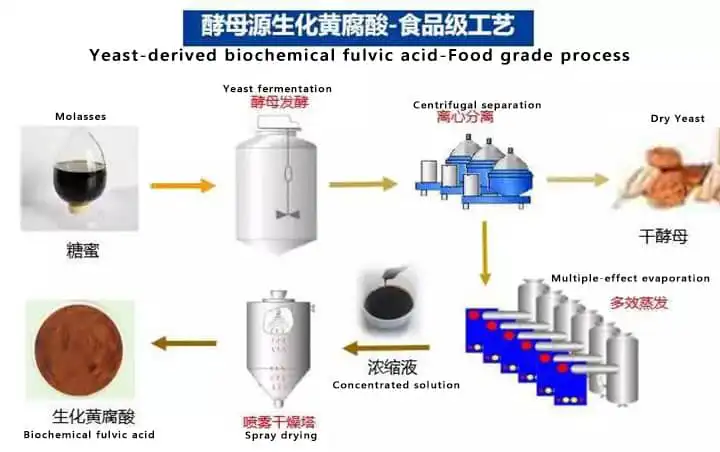“Why the color and ph of two different shipments of bio fulvic acid are different?” client
All of our biochemical fulvic acid provided comes from Yeast Fermentation in China. The production process is influenced by several factors:

Factors Affecting Appearance:
- Raw Materials: The main ingredient in the molasses used for fermentation is sugarcane. The sugar content in the fermentation liquid is adjusted based on climate and sugarcane quality, often supplemented with hydrolyzed sugars from starch.
- Variability: Differences in raw materials can lead to variations in the final product’s appearance. Generally, significant changes in appearance are not expected within a year.

Factors Affecting pH:
- Yeast Types: The Yeast factory produces various yeast strains for different applications (food fermentation, alcohol production, animal feed additives, skincare, medical uses). For example:
- Saccharomyces cerevisiae: Primarily for brewing and fermented foods.
- Foam Yeast: Mainly for beer production.
- Aspergillus flavus Yeast: For enzyme production.
- Lactic Acid Yeast: For dairy production.
- pH Adjustment: Different yeast strains require specific pH environments, necessitating manual adjustments during fermentation, which can affect the final product’s pH.
- Normal pH Values: According to Angel staff, slightly alkaline values are considered normal. Generally, biochemical fulvic acid tends to be weakly acidic, although alkaline conditions can occur.
It’s important to communicate these variations to the end clients to prevent misunderstandings regarding product characteristics.





